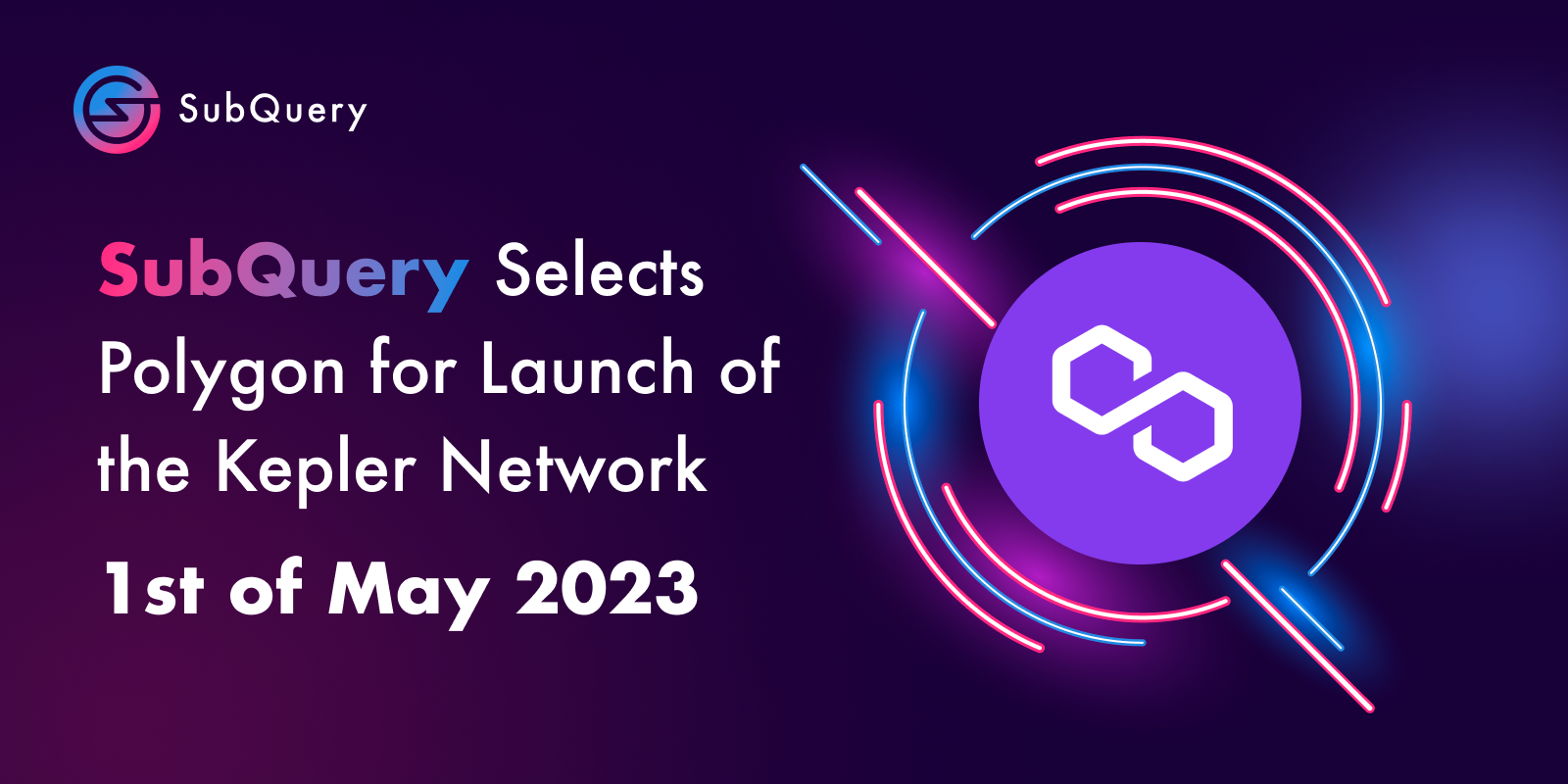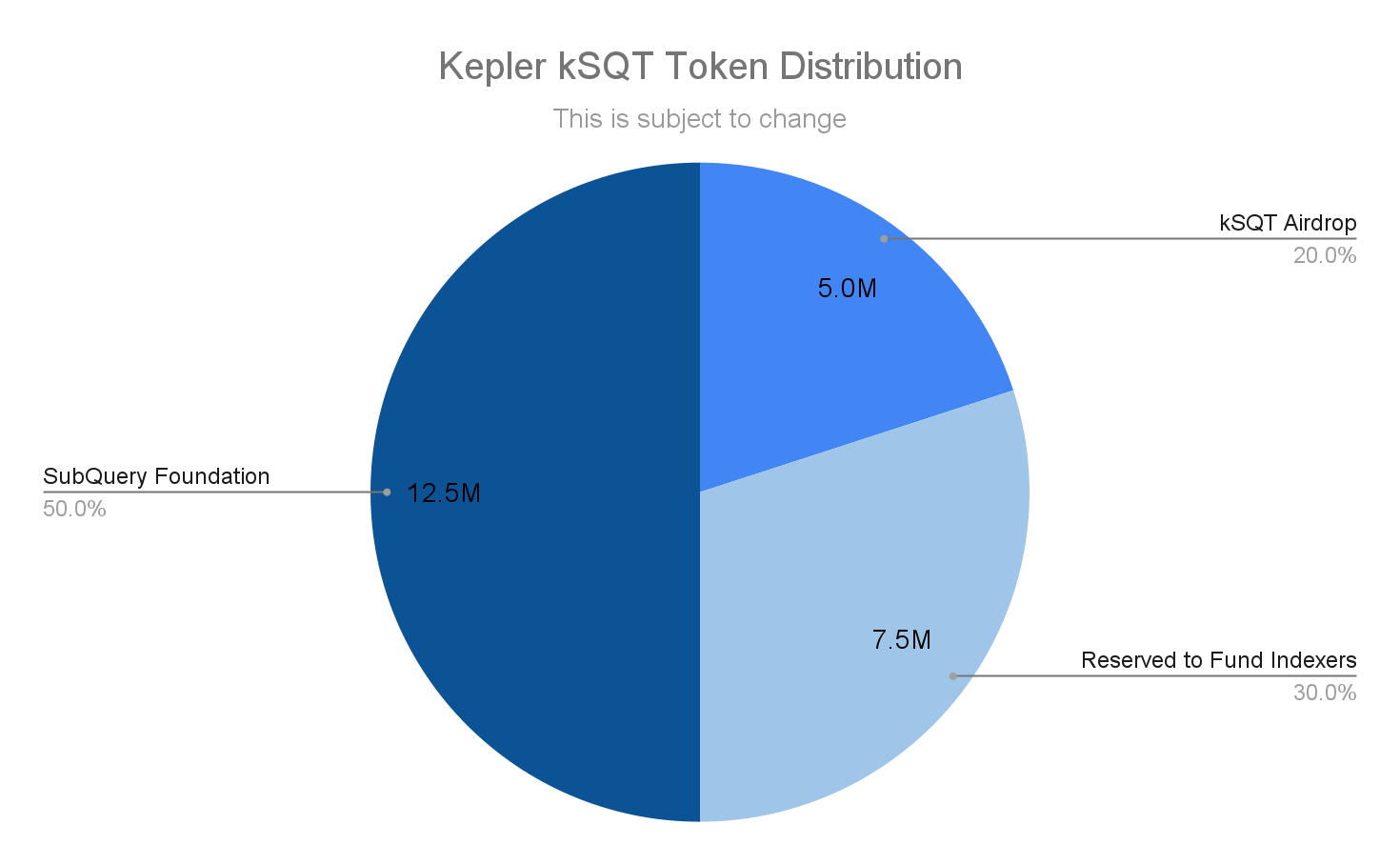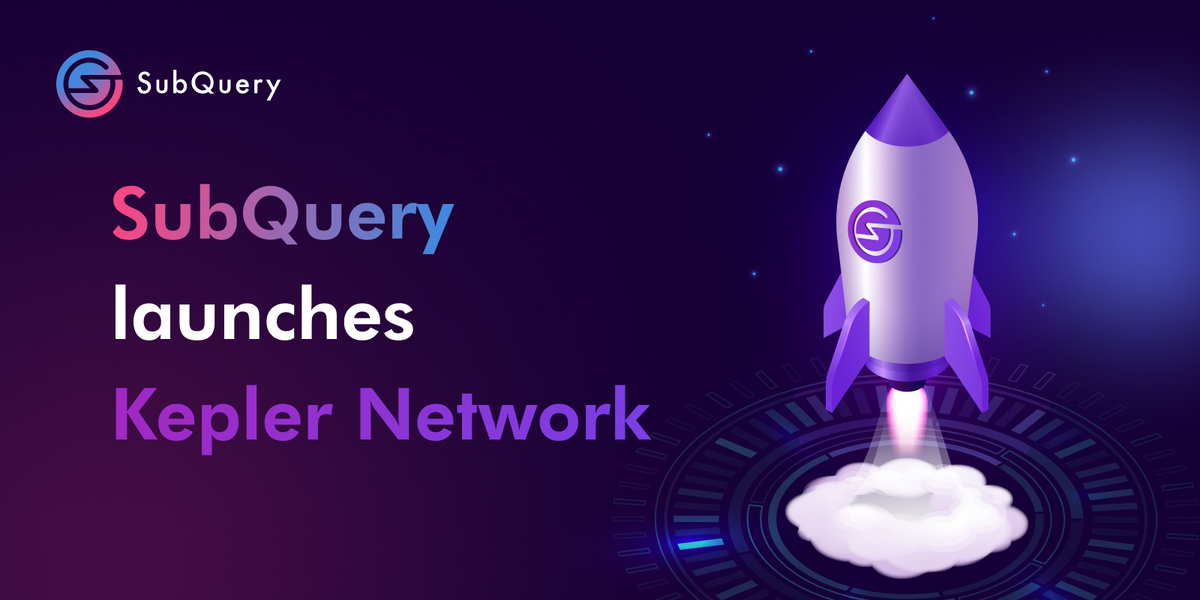Today we are delighted to announce that the Kepler Network, the pre-mainnet for the decentralised SubQuery Network, has launched on Polygon, the Layer-2 scaling solution for Ethereum. Kepler is our pre-mainnet designed to bootstrap the SubQuery network and progressively decentralise real world SubQuery project traffic.
This is a huge achievement in the SubQuery journey, and the beginning of the future of web3 data infrastructure. From here, SubQuery will become more decentralised, and as a result; faster and more resilient. This announcement builds on the momentum over the past few weeks where we have announced an airdrop for initial Kepler Network participants and our integration with Ethereum and Polygon.
We are also pleased to announce phase 1 of the Kepler Network airdrop (to Indexers) has already gone live.

Kepler represents the next stage of development for SubQuery and is the last one before we launch our decentralised SubQuery Network. The Kepler network is the “pre-mainnet” of SubQuery that will enable thousands of users to progressively adopt the decentralised features of the network and earn real rewards for their efforts.
As a part of the Kepler launch, we are also issuing a kSQT token which can be burned in exchange for SQT once the SubQuery Network is launched. kSQT will be tradeable while the Kepler network is online, allowing more people to buy the token and participate, as well as allowing indexers to swap kSQT rewards to pay for their infrastructure. You can read more about the swap process here.
Kepler Outcomes
When we survey the web3 ecosystem today, we see that many other projects that provide decentralised services have made poor progress migrating customers from their centralised services to their decentralised alternatives. Kepler is designed to migrate real projects from our managed service to the decentralised SubQuery Kepler Network while providing incentives to all. It has the following three outcomes:
1. Provide an environment for real indexers and delegators to earn real rewards. kSQT is tradeable and will be burnt in exchange for SQT in the future. Indexers on Kepler will be earning SQT that will provide real rewards for their indexing efforts and Delegators will be able to participate and be rewarded with a cut of query fees.
2. Seamlessly and progressively migrate real SubQuery project traffic from our Managed Service to the decentralised Kepler Network. This will be done in a controlled way described in detail below.
3. Allow us to continue to fine-tune parameters of the network (including reward rates). Kepler is a network of change, with the aim that by the time we finish this, the SubQuery Network will be as stable as possible.
How does Kepler Work
Kepler is largely identical to the SubQuery Network in operation, with the main differences being the use of the kSQT token, and that there are no consumers in Kepler. Instead, SubQuery’s Managed Service will act as the sole consumer in the network, proxying real requests from real users to projects hosted by Indexers in the decentralised Kepler Network. From the perspective of Indexers or Delegators, they will observe requests coming through to the Kepler network from various SubQuery Gateways and will be rewarded in kSQT in alignment with our SubQuery Network Whitepaper.
SubQuery is introducing an Indexer Excellency Programme designed to encourage Indexers to provide a better service to the network, including metrics around uptime and responsiveness to updates. Indexers with higher scores will in turn receive a larger proportion of requests from SubQuery’s Gateways, meaning more work and theoretically more rewards for their efforts.
Indexers and Delegators are able to access the network’s utility using kSQT, a real utility token designed just for Kepler. Indexers and Delegators will be able to acquire and sell limited amounts of kSQT via a swap contract that SubQuery provides. When the SubQuery Network is ready, we will retire Kepler, and any kSQT can be burnt in exchange for SQT.
To find out more about why we chose Polygon, check out our recent article where we explain why Polygon was the best choice for Kepler.
How will we distribute kSQT
The supply of kSQT will be heavily restricted and will be airdropped to Indexers and Ambassadors to help launch the network and show our appreciation for their support. The main recipients will be Indexers selected from the SubQuery Frontier testnet who participated and received sufficient points (Phase 1) - you can check if you are an eligible indexer on this list here.
We will announce the dates for Phase 2 of the airdrop once we’re confident that indexers have onboarded correctly and the Kepler network is running well. Upon the retirement of Kepler, all kSQT can be burnt in exchange for SQT after SubQuery Network launch.
If you are late to the party, SubQuery will offer a basic swap mechanism for kSQT rewards (but not the airdrop itself). You will be able to use this swap mechanism to convert rewards earned via indexing and delegation into USDC at a predetermined rate. This is done with the sole purpose of reimbursing infrastructure costs incurred by the indexers, hopefully at a profit - this exercise will allow us to calibrate reward emissions in conditions close to the real market.
kSQT Tokenomics
Kepler’s kSQT token supply was greatly simplified to reflect that it is a canary net and a precursor to the SubQuery Network. Remember, when the SubQuery Network is ready we will retire Kepler, and any kSQT will be burnable in exchange for SQT.
You’ll first notice that we are airdropping over 5 million kSQT to ambassadors and the best Indexers from the SubQuery Frontier Testnet. This represents US$100,000 of value transferred to our community at Kepler genesis, an indication of how important we see the community and the Kepler network. We will earmark another 7.5 million kSQT for indexer rewards. The final 50% will be kept by the SubQuery Foundation to allow the Foundation to perform critical governance changes and adjust key parameters of the Kepler network prior to the mainnet launch. This portion is not intended for sale.
Below is the current planned tokenomics for kSQT. Note that as with all tokenomics, this is subject to change.
Total Supply: 25,000,000 kSQT
Indicative Price: US$0.02 per kSQT

KEPLER NETWORK AIRDROP
With the Kepler Network Airdrop we are rewarding our devoted community for their early support and adoption of the network. We will airdrop kSQT tokens to our Indexers and Ambassadors in two phases. Eligible recipients can see exactly how much kSQT they will be airdropped, and claim them, through the easy UI of our Airdrop app.
Indexers can check if they are eligible to receive the airdrop here.
IN SUMMARY
- (26th April) — Announced the launch date and location of Kepler Network
- (26th April) — We’ve launched our Airdrop App to allow eligible Airdrop participants to check and claim their tokens
- (27th April) — Released indexer guides so Kepler Indexers can start indexing dictionaries over the weekend
- (1st May) — Kepler Network went live
- (1st May) — Phase 1 Airdrop, and release full indexer documentation.
- Start migrating real SubQuery project traffic from our Managed Service to the Kepler Network.
- Fine-tune parameters of the network (including reward rates) and monitor stability
- Onboard Delegators (Ambassadors)
- Onboard Consumers
- Deploy SubQuery Network Mainnet and allow kSQT to SQT token swaps
- Retire the Kepler Network later this year and launch the SubQuery Network Mainnet
If you have any questions, please reach out to the team in our Discord.
About SubQuery
SubQuery is a blockchain developer toolkit facilitating the construction of Web3 applications of the future. A SubQuery project is a complete API to organise and query data from Layer-1 chains. Currently servicing BNB, Ethereum, Polygon, Polkadot, Avalanche, Algorand, Cosmos, NEAR and Flare projects, this data-as-a-service allows developers to focus on their core use case and front-end without wasting time building a custom backend for data processing activities. In the future, the SubQuery Network intends to replicate this scalable and reliable solution in a completely decentralised manner.
Linktree | Website | Discord | Telegram | Twitter | Matrix | LinkedIn | YouTube

